Osteochondrosis is a widespread disease of intervertebral disks, which occurs in people from different ages.Today, it is diagnosed in more than 40% of pretty young people under 35 years, and among the older category affects 9 out of 10 people.There are several phases of development, and previously detected pathology, lighter and more efficient treatment is lower risk of developing dangerous complications.
What is osteochondrosis
Intervertebral discs are located between the rook bodies and are the types of shock absorbers that absorb stress when walking or performing other physical activities.They have different sizes depending on their position: in the cervical region, the discs are smallest, and in the lumbar spine are the greatest.
They are all built the same.In the center is nucleus pulpossus which is the main component of the disk and has high elasticity.It is surrounded by fibrous membrane and end elements.
Osteochondrosis is a degenerative-dystrophic disease in which there is a change in the form and size of intervertebral discs as a result of their abrasion and preconditions are created for the formation of rain, the deformation of the vertebrae, spondylosis and other disorders.
The condition of the disks is a consequence of the malnutrition of cartilage tissues, which leads to a gradual reduction in its elasticity and increased fragility.
As a result, discs change position, their height is also reduced by the pattern of microcracks on the fibrous membrane.This creates serious preconditions for the formation of interfood horses, pinch of spinal roots or blood vessels.
The smallest change in discs leads to disorders of their functions.This is accompanied by the pain of different degrees of intensity.At the same time, the prerequisites are created for the development of disease of internal bodies, because the quality of their activity directly depends on the condition of the spine and the conductivity of bioelectric impulses along the nerves.
May affect one or more interfoodls in any part of the spine.Therefore, osteochondrosis is diagnosed:
- Grlić spine;
- Thoracic spine;
- Lumbar spine.
In particularly severe cases, the pathological process includes most intervectors of the spinal column, which accompanies discomfort throughout the back and almost complete loss of performance.But most often, osteochondrosis affects the lumbar spine, because it is borne by the highest load, as well as the intervebrebral discs of the neck spine due to great mobility.
Development
During osteochondrose, 4 phases can be roughly different:
- Reduction of disk hydration levels, leading to its dehydration and the formation of microcracks.Often at this stage there is still no manifestation of incentive disease.
- Reduction of disk height, which leads to the appearance of the first symptoms of pathology.At this stage, there is a reduction between individual segments, leading to reduction of spinal ligamation tons and creates the possibility of transferring vertebrae from their natural positions, I.E., spondylosizes development.In such situations, a wave-like wave is most often perceived.May distinguish periods of deterioration, accompanied by acute pain, and the period of remission, in which there is no discomfort at all or there is pain in pain.
- Deformation of the affected interverter disc with the formation of protrusion or prolapse.Sometimes there is an involvement of joints in the pathological process, which is manifested by the development of arthrosis or vertebrae.At this stage, the immune system responds to the processes that occur in the spine by developing aseptic inflammation with the swelling of the tissue that surround the affected segment for the cartridge motors.In this case, the pain appears regularly, reflex muscle cramps, as well as restrictions in mobility, can be observed.In rare cases, the signs of neurological deficit (radicular syndrome) are already being developed as a result of nerve fiber tightening to the resulting protrusion of intervertebral disks.
- Development of complications.Since the human body has wide compensation skills, when the intervertebral disk loses the ability to perform their functions, the osteosynthesis process is activated to secure the vertebral in a stable position.This leads to bone formation - osteophyte - on the edges of the vertebrae of the affected segment, they imagined.As a result, because of them, two or more vertebrals close together, forming one conglomerate, I.E.spondylosis develops.It always leads to nerves of nerves and the development of acute neurological symptoms in the form of paresis, paralysis and serious disorders in the functioning of appropriate internal bodies.
Reasons
Today, there are many theories for osteochondrose development, including vascular, mechanical, hereditary, hormonal, infection - allergies and others.But none of them is able to fully explain the mechanism for the development of changes in the tissues of intervertebral disks.Therefore, most likely, everyone complement each other.
Thus, a huge number of very different factors can lead to the development of osteochondrose.Among them is the most significant:
- Genetic predisposition;
- regular performance of severe physical work;
- Maintaining a seating lifestyle;
- the presence of scoliosis or other spinal deformities;
- Suffering for back injuries;
- Unbalanced nutrition, lack of vitamins;
- Contagious diseases;
- Metabolic disorders;
- Congenital spine anomalies (Kimmerli Anomaly, Chiari Anomaly, Cranior Congratulations, Sacrization, Lumbarization);
- excess weight;
- Regular heavy stress.
It is believed that the most significant impact on the state of intervelling discs is constantly overloading a particular segment for the movement of spine.This cannot perform only monotonically hard physical work, but also a constant bending or habit of sitting for a long time.In such situations, additional stress puts on disks, muscles and ligaments, and other factors are just worsening the situation.
In general, osteochondrosis can be called almost natural age diseases that is an inevitable price to pay for an upright walking.
Symptoms
The earliest sign of the disease development occurs, mrvica sounds in the part of the spine where the beginning of degenerative dystrophic changes is observed.This is a consequence of the appearance of disorder in the diet of disk and advancement of its dehydration.At this stage, patients almost never seek medical attention.Therefore, their daily routines, eating habits and other factors remain the same, which contributes to the deterioration and transition of disease to another phase.
As a result, the symptoms typical of osteochondrosis are beginning to appear:
- strong muscle tension in the affected area on just one or both sides of the spine;
- sharp and painful pain that is intensified with each movement and obtained intensity over time, becoming unbearable;
- stiffness in arms or legs;
- Weakness;
- Movement stiffness, unauthorized mobility limit;
- reduced muscle tone to complete atrophy;
- Bad posture;
- Instincts in blood pressure.
As pathology progresses, the signs of osteochondrosis worsen.80% of patients perceive a blunt pain in the area of the affected segment of the spine movement, which is also characteristic of myositis.
Osteochondrosis Bay of spine
When affected by the cervix, the pain strives to radiate the belt, hands and other manifestations of neurological disorders.Patients keep their heads in the least painful position, and if necessary they turn to their entire body.
In addition, the pathology of the organs that imposed the end of the spinal cord in the spine can develop:
- Tinnitus and diseases of the organ of the ENT;
- dizziness;
- blurred vision;
- migraine;
- Increasing and level of anxiety increase;
- Sleeping problems;
- increased risk of allergic reactions;
- Reduced thyroid hormone level.
With the osteochondrose of the cervical spine, the vertebra syndrome and vegetative-vascular distinia are often diagnosed further.
Cervical infection with osteochondrose, especially when complicating the protrusions and interverters, can lead to blood vessel tightening.This is left to the impaired blood supply to the brain, which can be accompanied by the attacks of dizziness, loss of consciousness, and even stroke.
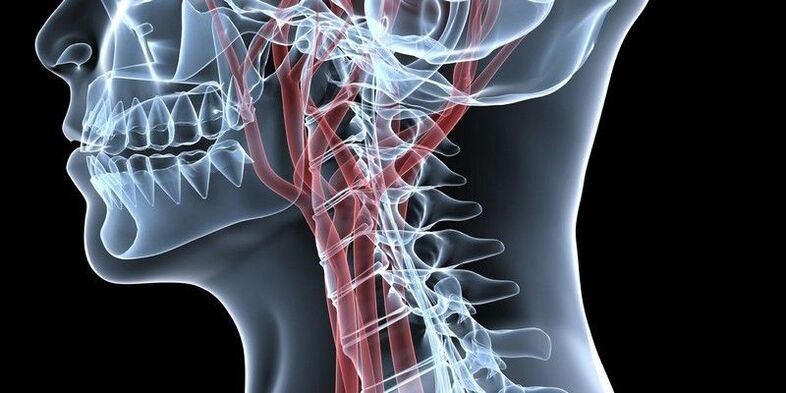
Osteochondrosis of thoracic spine
With osteochondrose of the thoracic region, which is diagnosed quite rarely, the pain occurs in the spine at the shoulder level and can be strengthened even when taking a deep breath.They often feel behind the breast, which can be wrong for heart disease.
When the urban roots are stabbed, the risk of internal organs diseases increases, in particular:
- Bronchi and lungs (asthma, bronchitis, pneumonia, pleurisy);
- Yellow wheel and its channel, liver (cholecystitis, jaundice, fat absorption disorders);
- pancreas and daodenum (digestive disorders, left hypochondria pain);
- adrenal glands, which affect the overall strength of the immune system and can cause the development of allergies;
- kidneys (urinary disorders, chronic chickenphritis, glomerulonephritis, etc.);
- Pelvic authorities (digestive disorders, gynecological, urological diseases, infertility).
Fact: Damage to an intervertebral disk from 7. The thoracic vertebrae per osteochondrose can lead to the development of Melitus diabetes.
Osteochondrosis of lumbosakracral spine
With osteochondrose of the lumbar region, Lumbago, called Lumbago.This is accompanied by burning, unbearable pain that happens abruptly.Often patients are even heavily sitting, comparing and walking, which may indicate the development of radio culinary syndrome.In such situations, it is easily noticed as they slowly sit and get up, trying to avoid torso torso.
If complications are continued, the main danger of caught Equine's nerves can lead to damaged control over the gauge and bladder discharge processes, as well as leg paralysis.Also in such cases, the following can be developed:
- Appendix;
- Diarrhea, prison;
- pain in the lower abdomen;
- Bladder dysfunction;
- Impotence;
- pain in knees, feet, hips or groin;
- swelling of the legs.
Complications
Osteochondrosis is a possible cause of a huge number of different diseases.Most often, if not treated, leading to the creation of a protrusion and intervertebral hernia.This in turn can cause:
- DISPOGEN MINEOPATIJA, which ends in parezici, muscle atrophy, a tendon reflex, loss of control over urination and defecation, and even paralysis of limbs;
- radiculopathy;
- Scoliotic or other spinal deformation;
- Spinal cord infarction due to the compression of the artery feeding him;
- Stroke due to the compression of the occipital artery.
Diagnostics
The appearance of pain in the back and neck should be a reason to contact neurologists or vertebra.Previously diagnosed with osteochondrose, easier and more efficiently will be treated.
To diagnose a disease, the doctor interviews and examines the patient.Based on their results, it is already possible to assume the presence of degenerative changes in interfaced discs.But for the final diagnosis, instrumental diagnostic methods are prescribed, including:
- MRI;
- Ct;
- X-ray shot in two projections.
Magnetic resonance imaging provides the most complete information on the state of interverter discs.The proceedings are mainly performed in a closed-type device with a power of 1.5 T. you can distinguish osteochondrose from tuberculum spondylitis, osteomyelitis, infectious diseases, etc.
CT scan and x-rays provide information on bone spine structures.Thanks to them, it is possible to discover the displacement of the rook bodies, the presence of osteophytes and other disorders.
In addition, the following can be prescribed:
- Ultrasound with door door doopography;
- electromyography;
- Laboratory research.
Healing osteochondrose
Therapy develops individually for each patient.In this case, the seriousness of degenerative dystrophic processes, the presence of complications, the nature of the patient's work activities and a multitude of other factors must be taken into account.
All patients must be prescribed by a number of measures, as it is impossible to eliminate pathological changes in interfaced discs only with the help of medicines.Components of conservative osteochondrose therapy may include:
- Drug therapy;
- osteopathy;
- Hand therapy;
- Physiotherapy (phonopholes, ozone therapy, carboxerapija, presotheraption, RF current);
- some sessions with rehabilitator.
All patients who are diagnosed with the distrophy of intervertebral discs are advised to reconsider their lifestyle.It is necessary to take the time for moderate physical activity, especially for representatives of seating, or, vice versa, think about the possibility of changing occupations for people who are forced every day to abolish difficult cases.
But in an acute period, a complete vacation is recommended.It is ensured not only by maintaining bed rest, but also by carrying orthopedic bends: In the event of damage to the spine of the cervix, a collar with chess is used;In case of osteochondrose of the lumbar region, it is recommended to carry corsets.
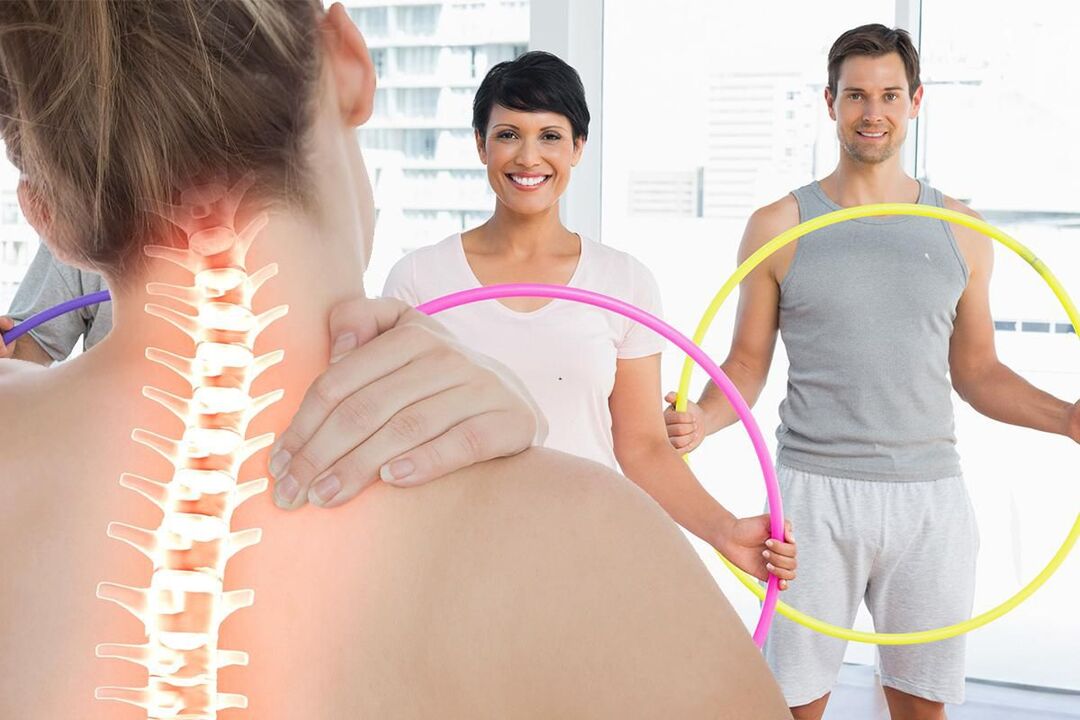
In the first phases of disease development is often enough to adjust to your lifestyle, deal with exercise therapy and visit chiropractors.In more advanced cases, drug therapy and physiotherapy are necessarily prescribed.
They never resort to self-propelled with suspicious means, self-processing anti-inflammatory drugs, as well as suspicious "healers" who are positioned online: you can only lose time, money, but also the remains of your health.
Drug therapy
For osteochondrose, drug complexes are prescribed to reduce pain, eliminated inflammation and reflective muscle cramps, improve nervousness and activate the processes of intervertebral disk regeneration processes.
Therefore, patients are prescribed:
- NSAIDS - help reduce pain and have an anti-inflammatory effect;
- Corticosteroids - show strong anti-inflammatory properties;
- Muscle relaxants - Eliminate muscle cramps, which helps reduce back pain;
- B Vitamins - provide improved functioning of the nervous system in general and implement nerve impulses per individual nerves in particular;
- Vitamin D is a drug responsible for bone tissue condition, as well as for larger brain functions, such as memory, attention, speech;
- Chondroprotectors - nurture intervertebral discs with joints needed to build new fiber nucleus pulpus;
- Psychotropic remedies - Increase the efficiency of nonsteroidal anti-inflammatory drugs and muscle relaxant;
- Vascular drugs - Improve blood circulation in tissues that surround your spine, which ensures more active supply of nutrients and oxygen on intervertebral discs;
- Anticonvulsants - used in rare cases to mitigate very heavy cramps.
For very strong pain, which most often indicates complications, patients can undergo blockages, which provide direct performance.Sometimes corticosteroid hormones are added to the solution to perform blockage.This additionally leads to a pronounced anti-inflammatory effect.
Blockages are performed under the conditions of absolute sterility, which can only be achieved in specialized medical institutions.At the same time, they require special knowledge and skills, so that only a highly qualified healthcare professional can be competent to deal with the task.Otherwise, there is a high risk of infection or nerve fiber damage, which will lead to difficult complications.
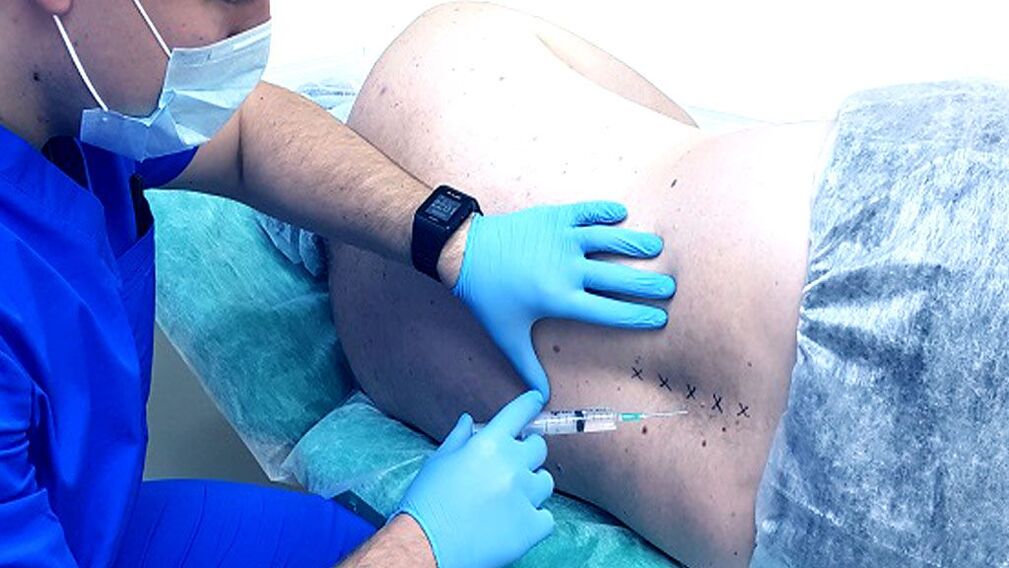
During the injection blockade, they usually give on both sides of the spine in the area where they are not nerves that cause pain.There are several techniques for their performance, including a specific doctor individually.
But it is advisable to perform blockages not more than 4 times a year.Since with osteochondrose, acute attacks, painful pain occurs much more often, the first overhead efforts to remove the causes of their phenomenon, I.E.Degenerative-Dystrophic process in the common.
Hand therapy
Manual therapy sessions are prescribed outside the exigh times of osteochondrose.They play one of the leading roles in the treatment of diseases, because the competent use of manual techniques on spine and the environment does not just stop the progress of the pathological process in interverters, but also to create the most favorable conditions for their restoration.
In addition, certain techniques can have a positive effect on the functioning of internal organs.For example, one of the methods was designed, the normalization of the position of each spine, to remove pressure on spinal roots, blood vessels and spinal membranes, thus returning a normal bodies with a nervous system.This allows the removal of hidden causes of development of the above diseases of the heart, bronchi, lungs, kidney, gastrointestinal tract and reproductive system and leads to full recovery.
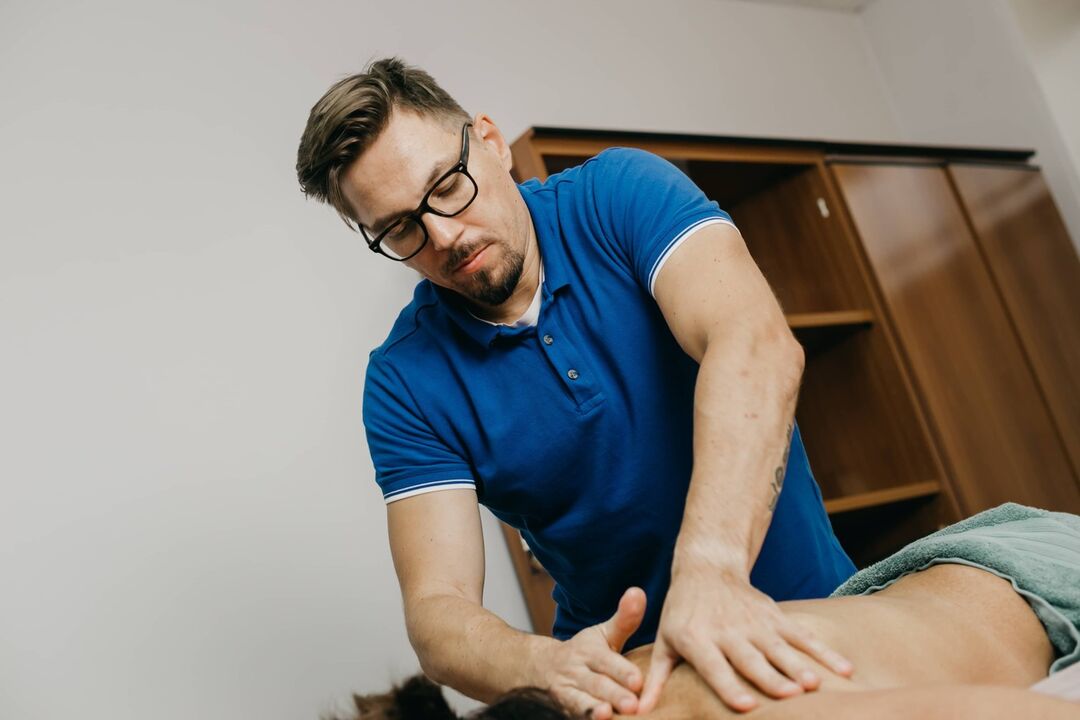
Thanks to jewelry-precision performance on the spine, not only circulation of blood is activated and metabolism do not speed up, as in a classic therapy massage, but also natural mechanisms for self-app.Elimination of spinal retractors, the incorrect position of vertebrae and other pathological changes in the spine through manual therapy can further strengthen the immune system, improve overall well-being and significantly improve the quality of life.
Positive changes can be observed after the first session, and in the future their seriousness is only increasing.
Physiotherapy
Physiotherapy procedures increase the effectiveness of all other methods of osteochondrose and help reduce pain.It is most commonly used:
- Electrophoresis - Use of electricity to ensure penetration of anesthetics, anti-inflammatory and other agents directly in the place of inflammation, allowing you to quickly obtain a pronounced therapeutic effect;
- Ultrasonic therapy - Ultrasound performance provides analgesic effect, increases the intensity of metabolic processes in the field of influence and creates prerequisites for high-quality renewal of diluted intervebrebral disks;
- Staff therapy - includes stretching and mashing of spine on a special ribbed mattress that activates blood circulation and increases muscle tone;
- Traccija therapy or spinal water - is performed using special devices that create a tuning load on the spine, as a result that distance between vertebrae increases and pressure on a worn intervertal disk reduces, which allows more active to recover.
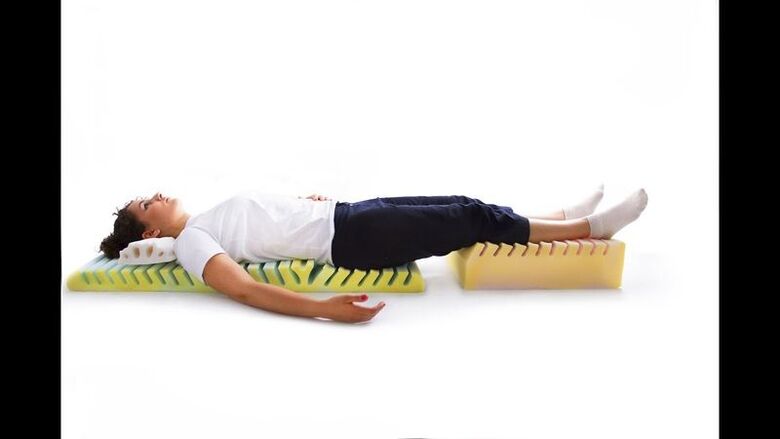
All procedures are prescribed in the courses of 10-15 sessions.When you choose them, they take into account not only the condition of interverters, but also the presence of simultaneous diseases, because in some of them, the physical effects are contraindicated in some of them.
Practice therapy
Therapeutic exercises for osteochondrose play a significant role, as the selected exercises for damage to different parts of the spine can help in the form of strong muscle corsets and eliminate increased muscle tone at the same time.This will provide good support for the spine and stop the progress of the degenerative process in interfaced discs.In addition, exercise therapy helps activate blood circulation and increase the intensity of metabolic processes.
Development of the Physical Therapy Program The task is a remediation doctor.Based on the severity of the spinal lesion, the characteristics of the patient's physical development, its years and other factors, will create an optimal expensive exercise, whose implementation will create an optimal muscle and spine load.
First classes must be carried out under the supervision of a doctor.Once the patient learns properly performing each exercise, he is allowed to continue practicing at home.It is important to avoid sudden movements.All exercises are performed daily and smoothly, and the load increases gradually.But the appearance of pain during exercise is a good reason to refuse to perform the exercise that caused him.

Prevention
It is much easier to prevent the development of the disease but to deal with its consequences later.Because osteochondrose can happen in everyone sooner or later, you should consider possible risks as soon as possible and do all efforts to prevent it.Therefore, any person should follow the following recommendations:
- Avoid physical inactivity, exercise regularly, swim and during sitting work, take regular heating breaks;
- Pay attention to your holding when walking or sitting;
- Buy a high quality orthopedic mattress and pillow;
- Follow the correct weight lifting techniques: with flat back and bent knees;
- Change the occasional shoes to the most comfortable and leave the dress for special occasions;
- Eat the right so that the body does not experience nutritional flaws and weight remains in normal limits.
There is only one way to avoid the appearance and manifestation of the symptoms of osteochondrose - Start taking care of yourself and your health.Since osteochondrosis is not only a disease, but a complex of muscle-tonic and neurodstrophistic changes, which are the body for physical inactivity, chronic static muscle tensions, especially in common, swimming and stretching programs, including yoga.
So osteochondrosis is a very common disease, but with careful attention to your own health, you can effectively fight at any age.But ignoring the problem will not lead to anything good and sooner or later to force the patient to lie on the operating table.
























